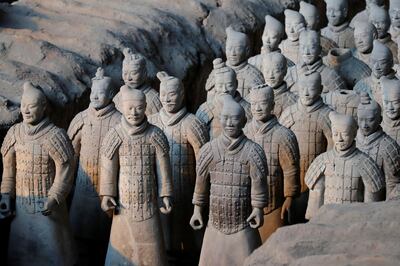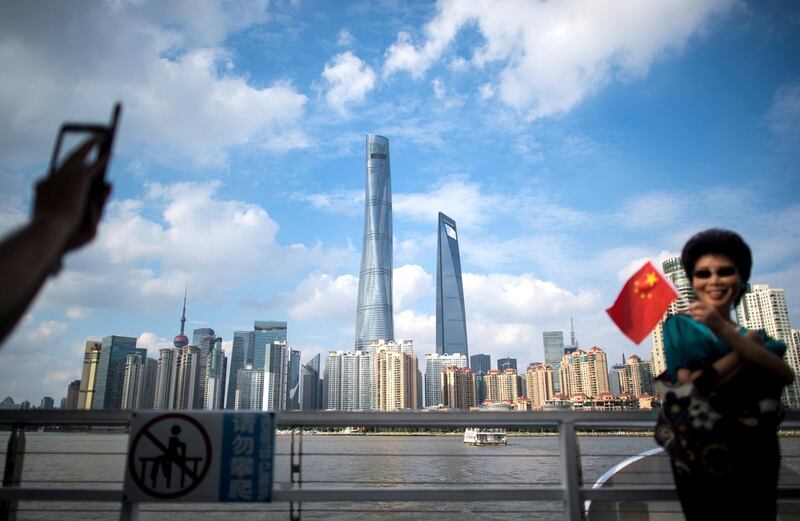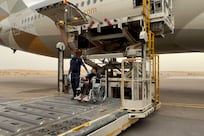China, the world's most populous country, home to one of the world's oldest civilisations and visited by Islamic travel writers since the ninth century, is already the world's fourth-largest tourist destination, with over 60 million visitors a year. Now, both its tourism numbers and its ties with the Muslim world are set to increase after it approved visa-free travel for UAE nationals, effective from this week. Emiratis can now spend up to 30 days anywhere in the country without needing a visa.
Once a notoriously difficult country to obtain visas for and travel in, China has opened the floodgates to tourism in the past 15 years, upgrading its airports, high-speed rail routes and other tourist infrastructure. It now offers a visa-free transit policy to citizens of dozens of countries, allowing visitors to stay and see the sights for up to 72 hours in Beijing, Chengdu, Guangzhou and Chongqing, and up to 144 hours, or the equivalent of six days, in Shanghai. High-speed rail routes mean there is now time to see two or more major cities within the three-to-six-day limit.
In line with its position as a large and rapidly expanding industrialised nation with a large, wealthy and increasingly mature middle class which is itself travelling all over the world, China is also now the world's highest spending tourism source country, with its citizens spending almost $300bn a year on travel throughout the world, double what is spent by the world's second most valuable tourist nation, America, according to the United Nations World Tourism Organisation (UNWTO). China is a target market for the UAE's inbound tourism market and a large segment of its hotel construction is at least partly aimed at tourists from China and its neighbours in Asia.
With a recorded history going back over 4,000 years, China's size also means the country is home to a huge variety of cultures, landscapes and architectural styles, from the brand-new, ultra-modern Shanghai Tower to the limestone karsts of Guilin in the hugely scenic south-west province of Guanxi. Massive spending on hotel infrastructure means that high standards are now obtainable even in such out-of-the-way places, though all the world's luxury hotel and shopping brands are to be found in Shanghai and Beijing.

Far beyond the Forbidden City in Beijing and the Great Wall, boutique hotels can now be found in less obvious locations and there are now 129 restaurants across China listed in the Michelin Guide. Shanghai now has 28 Michelin-starred restaurants. Macau, once only famous for its casinos, is also now home to some of the world's finest restaurants, and between them, Macau and nearby Hong Kong have 81 Michelin-starred restaurants.
From the UAE, already the world's biggest international aviation hub and only 7-10 hours flying time from China depending on the city, new direct flight routes have been launched in the past few years, most notably with Etihad and Emirates. There are now about 60 direct flights a week to six Chinese cities. This year, Lonely Planet has named China as one of its top trending destinations for 2018.
Since launching its first passenger service between Dubai and Shanghai in 2004, Emirates now operates a twice-daily A380 service to both Shanghai and Beijing, while Etihad operates daily flights to both cities, which are 1,320km apart but connected by a new high-speed rail link which covers the distance in 4.5 hours.
SHANGHAI
With a population of 34 million, Shanghai is not only China's biggest city and commercial centre but the biggest city in the world by population. Its main sights are the Pudong skyline seen from The Bund, and the new Shanghai Tower, which boasts the world's highest observation deck.
BEIJING
The Chinese capital's imperial palace, the Forbidden City, adjacent to Tianamen Square, has been recently upgraded and previously closed halls are now open to the public. The other main sight is the Summer Palace, and travellers often use the city as the starting point for a day trip to a section of the Great Wall at Mutianyu. Later this year will see the opening of the Leeza SOHO, a glass tower designed by Zaha Hadid, in Beijing's new financial district and featuring a 190-metre central atrium, the world's tallest.
GUANGZHOU
Emirates operates a daily direct A380 service to this large port city north-west of Hong Kong and Shenzhen, where the Design Society has recently opened and the Norman Foster-designed China Resources Land, a high-tech complex in the Shenzhen High-Tech Industrial Park which aims to set a new benchmark for sustainable architecture in the country. Guangzhou itself is home to a new, Zaha Hadid-designed opera house.
YINCHUAN AND ZHENGZHOU
Emirates' thrice-weekly service to Zhengzhou stops in Yinchuan, allowing travellers to explore these lesser-known cities in north-west and central China. Yinchuan in Ningxia has a large Muslim population and Indo-Saracenic architecture, is the location for the China-Arab Expo. The second destination, Zhengzhou in central China, is the cultural centre of Henan province and a mostly industrial and trade hub.
CHENGDU
Etihad flies direct to Chengdu in central Sichuan province three times a week. The province has a rich culinary history, is home to the country's most famous panda reserves. The city has a population of 16 million but is laid-back compared to many others. It's the gateway to numerous natural scenic areas and World Heritage Sites. Chengdu is also home to the annual Chengdu Dubai International Cup, set up five years ago and aimed at strengthening ties between China and the UAE.
XIAN
The capital of the central Shanxi province is home of the 'Terracotta Warriors', and accessible on a one-stop flight with the UAE's partner airlines such as China Southern Airlines, China Eastern Airlines, China Airlines, Asiana Airlines and Hainan Airlines. The 1,200km distance from Beijing can also be covered on a 4.5-hour high-speed rail service.

URUMQI
The Sharjah-based Air Arabia operates a direct route to the north-western Chinese city of Urumqi, which has a claim on being the farthest city from the sea than any other in the world. Meaning "beautiful pasture" in Mongolian, the Urumqi is a modern industrial city in the vast Xinjiang region, which offers attractive natural areas for hiking as well as large reserves of oil and gas. This particular flight is only five hours long.
________________
Read more:
[ Tourism year in review 2017 ]
[ Emiratis to get visa-free travel to China in January ]
[ Where to go When: Winter 2018 ]
________________





